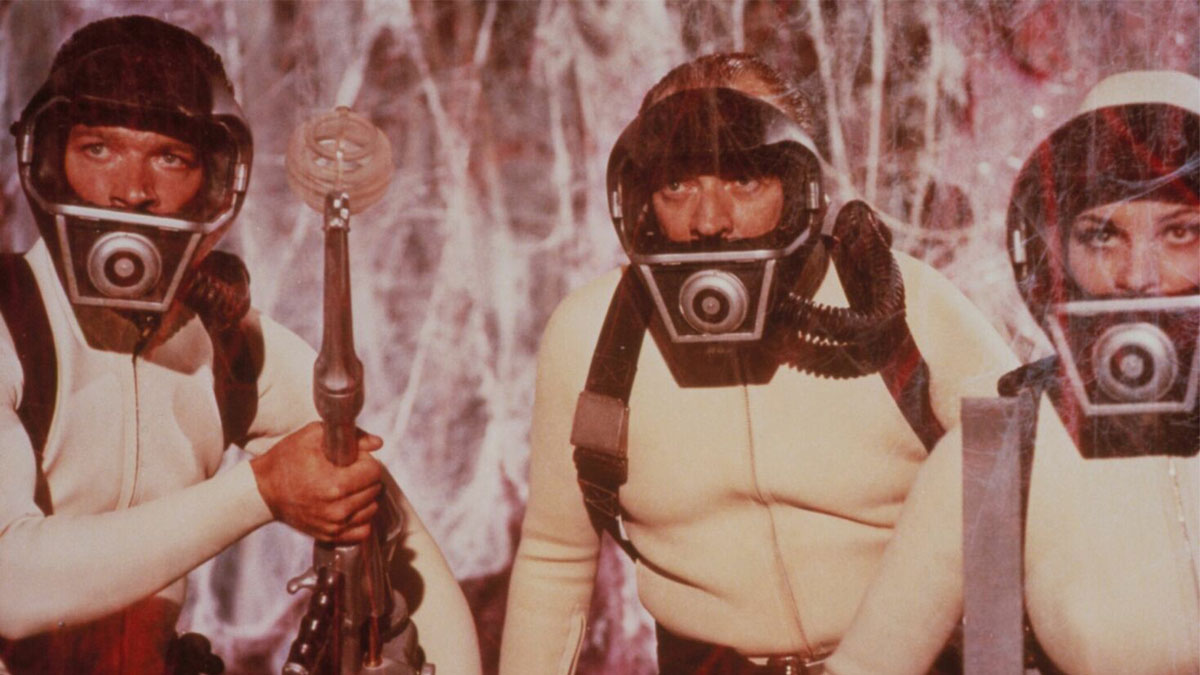
(C)2017 Twentieth Century Fox Home Entertainment LLC. All Rights Reserved.
``Fantastic Voyage'' A science fiction masterpiece of outstanding quality from the 1960s before ``2001: A Space Odyssey'' (Part 1)
2021.03.10
Depiction of CMDF headquarters
One of the production designers is veteran art director Jack Martin Smith . He joined MGM in 1935 and worked on the sets for many flamboyant musicals, including `` The Wizard of Oz '' (1939), ``The Ziegfeld Follies '' (1945), and `` Easter Parade '' (1948). In 1956, she transferred to 20th Century Fox, where she was in charge of such films as `` Carousel '' (56) and `` Cleopatra '' (63).
His primary responsibility was the CMDF headquarters. As Grant enters a secret underground facility and makes his way to the command room, we get a glimpse of the entire vast headquarters. Scenes like this are standard expressions in science fiction movies and TV shows made during the Cold War, and they intensely tickle boys' instinctive desire for a secret base.
However, it could not be expressed on 20th Century Fox's sound stage, so they rented a sports arena in Los Angeles for five days and set up a location set. However, cinematographer Ernest Laszlo had a difficult time lighting such a large space, so he solved the problem by hiding the lighting equipment behind pillars and in alcoves.

“Fantastic Voyage” (C)2017 Twentieth Century Fox Home Entertainment LLC. All Rights Reserved.
The CMDF headquarters set built on the sound stage is also large-scale, measuring 91m x 30m, and includes a reduction room, sterilization room, operating room, radar room, tracking room, computer room, conference room, etc. at a total cost of 1.25 million dollars. It was constructed by multiplying. In addition, a separate fee of $300,000 will be required to rent the various medical equipment stored in these rooms, and $300,000 to use the computer.
Consoles located throughout this CMDF headquarters are equipped with real video monitors. This may seem obvious, but at the time it was quite revolutionary.
In fact, before this movie, the method used was to install a 16mm film projector in the back of the set and use optical compositing later. This is because in the NTSC system used on American (and Japanese) televisions, images are recorded and displayed in a format of 60 fields/30 frames per second. If you shoot this at the film speed of 24 frames per second, the synchronization will be inconsistent, resulting in flicker and striped patterns.
So 20th Century Fox and the Marconi Corporation launched a $750,000 research project to build four television cameras capable of shooting at 24 frames per second. This image is synchronized with the movie camera and displayed on 12 video monitors.
After this, 20th Century Fox would use this system for various movies and TV dramas to recover their investment. However, at the time, the highest sensitivity for color negatives was only ASA 100, so there was a problem where the brightness of the monitor was overwhelmed by the studio lighting, which reportedly made the cameraman cry.

